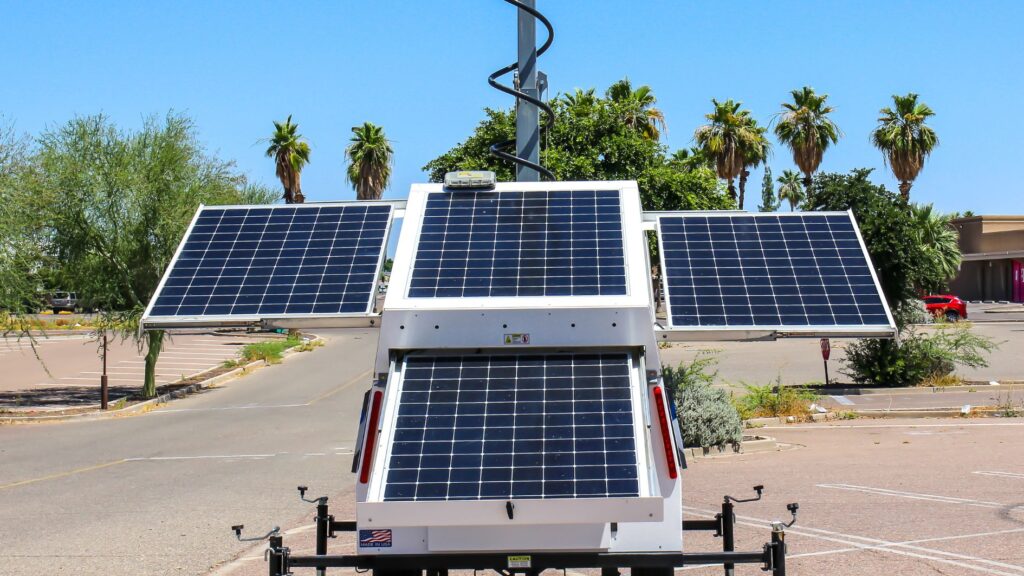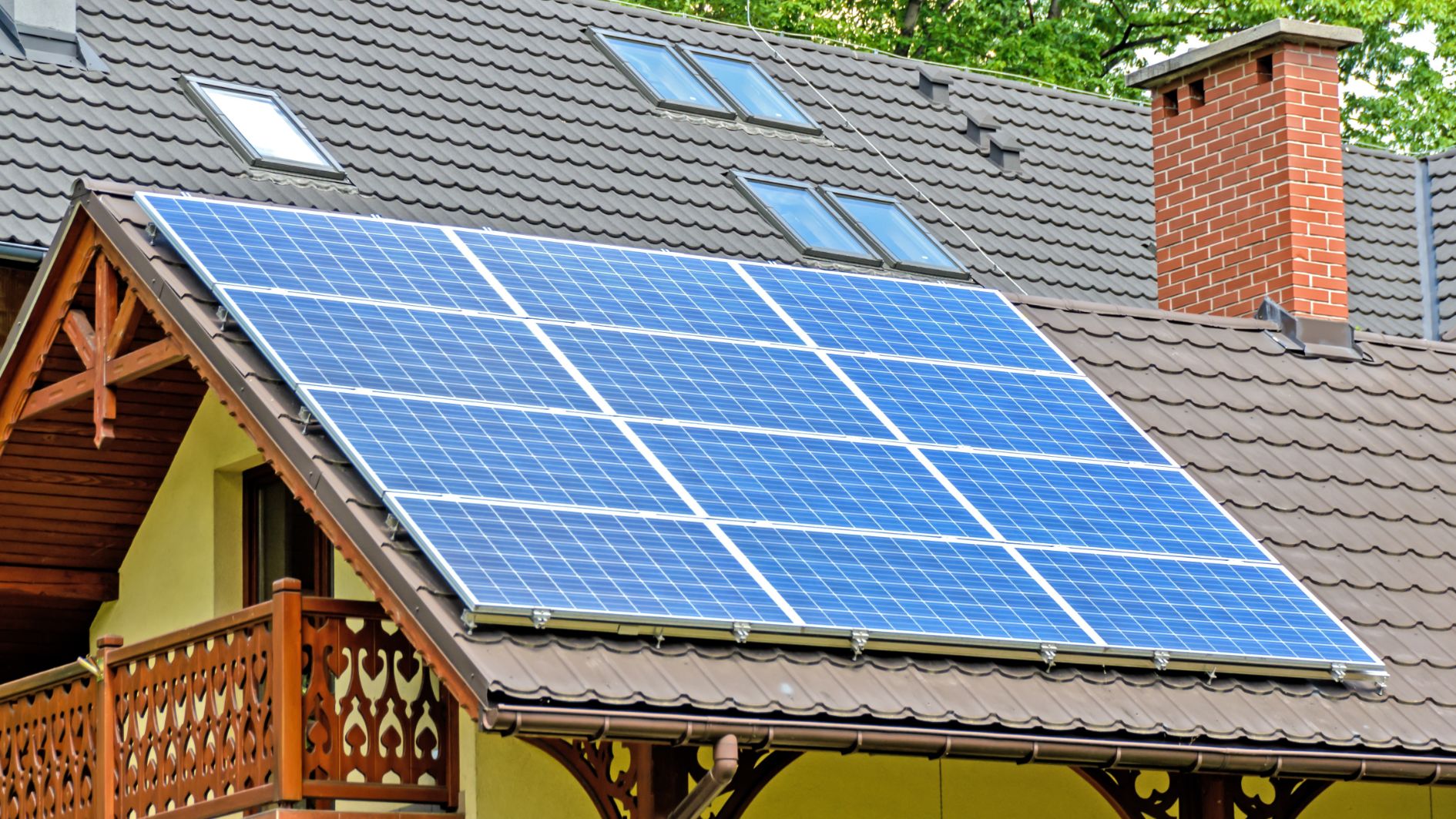Image source: Canva.com
When diving into the world of solar panels, navigating through uncertainties is common, whether you’re inquiring about expenses, the return on investment, or the required panel count. The precise number hinges on factors like your home’s dimensions and energy usage. If you’re up for some calculations, a bit of number crunching can lead you to a decent estimate. Don’t fret if math isn’t your forte; we’ll simplify the process as much as possible.
To begin, gather your electric bill, preferably with data on your power consumption throughout the last year. As a starting point, consider 400 watts per panel. If you already have a particular panel model in mind, note its wattage and utilize that value instead. Armed with these figures, you can embark on your estimation journey.
Here’s a simplified guide on how to determine the number of solar panels you’ll need:
- Calculate your yearly electricity consumption and divide it by your area’s production ratio. Then, divide this result by the power output of your solar panels.
Formula: Number of panels = (System size / Production ratio) / Panel wattage
For example, if your yearly electricity usage is 10,791 kWh, and your area’s production ratio is between 1.1 and 1.6, and you’re using 400 W panels, you would need between 17 to 25 panels.
2. You can use our Solar Calculator for precise panel quantity calculations tailored to your home. Simply input your address and estimated monthly power bill, and we’ll handle the calculations for you.
If you prefer doing the calculations yourself, here’s how we arrived at the formula:
- Annual electricity usage: This is your home’s total energy consumption over a year, typically measured in kilowatt-hours (kWh). The average American household uses 10,791 kWh annually, according to the U.S. Energy Information Administration (EIA).
- Solar panel wattage: This refers to the power output of a single solar panel under optimal conditions, measured in watts (W). We’ve used 400 W panels in our calculations, as they are commonly available.
- Production ratios: This ratio represents the estimated energy output of a solar panel system over time compared to its actual size. It varies depending on factors like geographic location and sunlight exposure. In the U.S., production ratios generally range from 1.1 to 1.6.
By considering these factors and using our formula, you can estimate the number of solar panels required to power your home efficiently.
Let’s dive into the calculations
Using our key assumptions (annual energy usage, solar panel wattage, and production ratios), we can derive an estimate for the number of solar panels your home requires. Here’s the formula again:
Number of panels = (System size / Production ratio) / Panel wattage
Substituting our numbers:
Number of panels = 10,791 kWh / 1.1 or 1.6 / 400 W
This yields between 17 and 25 panels for your solar array, contingent on the production ratio chosen (17 panels for a 1.6 ratio and 25 for a 1.1 ratio). For instance, if we consider California’s average production ratio of 1.5, you’d need approximately 18 panels, resulting in a system size of 7.2 kW.

Image source: Canva.com
Now, let’s talk solar panel costs
The price of solar panels is a crucial factor to consider. On average, solar panels cost $2.86/W. For an 11 kW system, the total average installation cost is $22,022 after factoring in the 30% federal solar tax credit. However, costs vary significantly based on location, installation expenses, and available incentives. Warmer climates may entail lower costs but require more panels, while colder climates might see the opposite trend.
Here’s an in-depth look at the primary considerations for determining your solar energy needs:
Understanding Production Ratios
Your solar energy system’s production capacity (measured in kWh) hinges on the sunlight your roof receives, determining the production ratio. Sunlight availability varies across regions and seasons; for example, California enjoys more sunny days annually than Massachusetts. Regardless of location, however, solar energy can sufficiently cover your electricity demands, liberating you from utility bills.
In regions with fewer peak sunlight hours, a larger solar array becomes necessary. Hence, production ratios fluctuate by geographic location, with lower ratios (due to reduced sunlight) necessitating more panels for adequate energy production.
Consider this scenario: Two similarly-sized households, one in California and the other in Massachusetts, consume the average American household’s electricity—around 10,791 kWh yearly. As previously calculated, the California household requires a 7.2 kW system to meet its electricity needs, while the Massachusetts counterpart needs about a 10 kW system.
Although solar panel systems in California are smaller, they produce equivalent power due to more peak sunlight hours annually. Conversely, in less sunny regions like Massachusetts, compensatory measures such as employing more efficient panels or enlarging the solar energy system become necessary, resulting in slightly more panels on your rooftop.
Determining Solar Panel Numbers for Specific System Sizes
For instance, a 7.2 kW system might suffice for the average American household’s energy consumption in regions with a production ratio of 1.5, a realistic figure for many parts of California.
Expanding further, let’s examine a range of solar panel estimates for common system sizes. These estimates assume a production ratio of 1.5, suitable for Californian households but potentially conservative for areas with less sunlight, necessitating additional panels for adequate production.
Additionally, here are the average solar costs for Massachusetts and California:
- Massachusetts: $11,800 for a 5 kW system (after the 30% solar tax credit).
- California: $9,592 for a 5 kW system (after the 30% solar tax credit).
Number of solar panels required for a specific system size
| System size, kW | Number of panels needed | Estimated annual production, kWh |
| 4 | 10 | 6,000 |
| 6 | 15 | 9,000 |
| 8 | 20 | 12,000 |
| 10 | 25 | 15,000 |
| 12 | 30 | 18,000 |
| 14 | 35 | 21,000 |
Once again, the table assumes you’re utilizing 400 W solar panels with a production ratio of 1.5. However, opting for lower or higher efficiency panels—typically correlated with lower or higher power ratings—will alter the number of panels required to power your home and the space your system occupies on your roof.
Determining your household’s annual energy usage can be challenging, especially considering the impact of oversized consumer products or add-ons. Running central air conditioning or maintaining a heated swimming pool, for instance, can significantly influence your annual kWh requirements and thus, the size of your solar panel array. To gauge the necessary size, assess the energy consumption of various products in your home.
Consider your available roof space
Ultimately, your solar panel installation is limited by the roof’s size. The following table provides an estimate of the square footage your system will occupy on your roof based on the power output of your selected solar panels.
Solar panels of different sizes
| System size, kW | 300 W Panels (sq. Feet) | 340 W Panels (sq. Feet) | 360 W Panels (sq. Feet) | 400 W Panels (sq. Feet) |
| 4 | 234 | 207 | 195 | 176 |
| 6 | 351 | 310 | 293 | 264 |
| 8 | 468 | 413 | 390 | 351 |
| 10 | 585 | 517 | 489 | 439 |
| 12 | 702 | 620 | 585 | 527 |
| 14 | 819 | 723 | 683 | 615 |
When dealing with a small or uniquely shaped roof, the efficiency and power output of your solar panels become crucial factors to weigh. Conversely, with ample roof space, opting for less efficient panels might be viable since there’s room for a larger number of panels.
What’s the impact of your home’s size on the required number of solar panels?
Take a look at the table below for a rough estimate based on your home’s square footage (assuming the use of 400 W solar panels and a production ratio of 1.5).
The area of the house compared to the number of required solar panels
| Home size, (sq. Feet) | Estimated annual electricity demand, kWh | Number of solar panels required |
| 1,000 | 4,710 | 8 |
| 2,000 | 9,420 | 16 |
| 2,500 | 11,775 | 20 |
| 3,000 | 14,130 | 24 |
Determining the required number of solar panels for common appliances is crucial when planning your solar energy system. Examining the kWh demands of everyday household devices reveals that certain additions can significantly alter monthly energy consumption, potentially affecting the size of the solar panel array needed.
For instance, integrating an electric vehicle with solar panels offers environmental benefits and enhances energy efficiency. However, this combination could necessitate doubling the size of your solar energy system.
While it’s possible to augment your solar system with additional panels later, it’s more cost-effective and efficient to size your initial installation accurately, considering anticipated purchases such as heat pumps, electric vehicles, or swimming pools. Cultivating the habit of evaluating the solar panel requirements for appliances like refrigerators and hot tubs is invaluable for any new solar homeowner.
Requirements for solar panels for individual devices
| Product | Average annual electricity demand, kWh | Number of solar panels needed |
| Refrigerator | 600 | 1 |
| Window air conditioning | 215 | 1 |
| Central air conditioning | 1,000 | 2 |
| Electric vehicle | 3,000 | 5 |
| Heated swimming pool | 2,500 | 5 |
| Hot tub | 3,300 | 6 |





